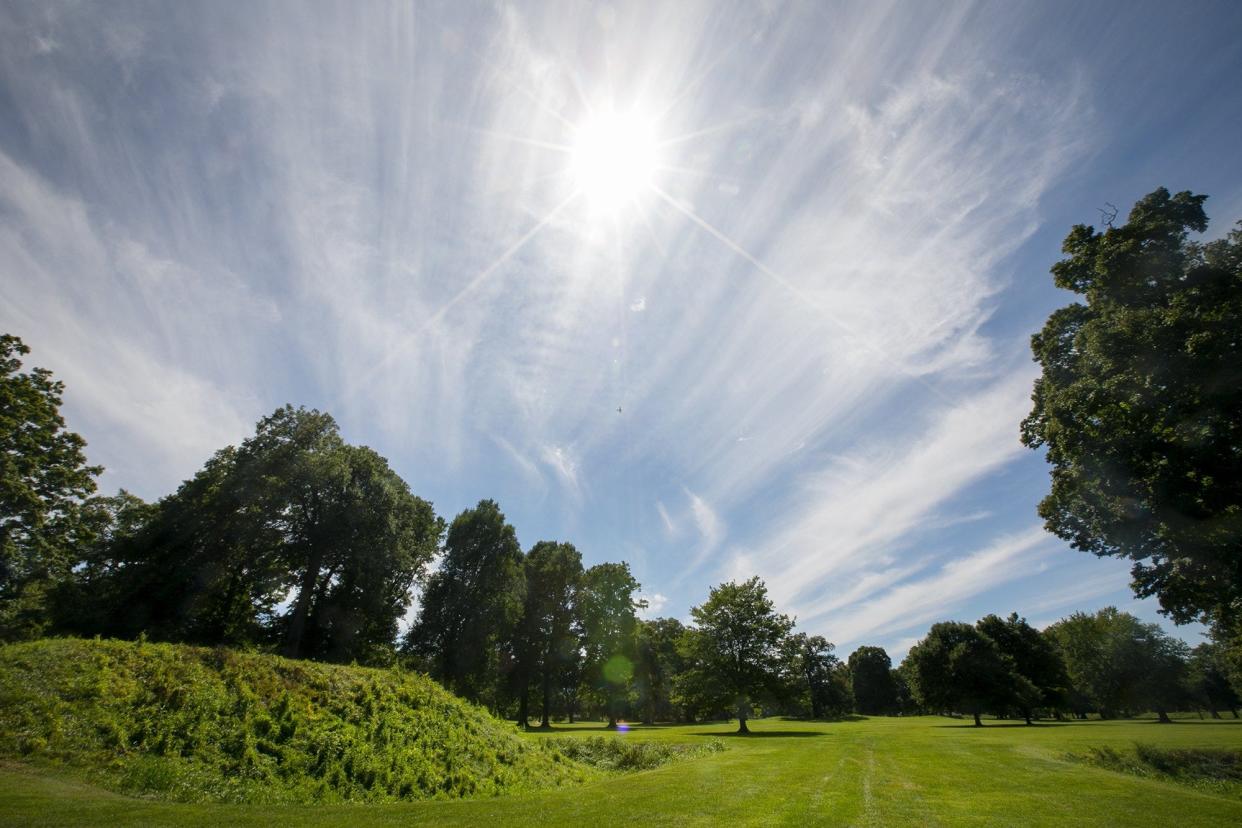Shiels: World Heritage the best future for Newark Earthworks

What do these three American sites have in common: Mesa Verde, the Grand Canyon and the Statue of Liberty? All three are UNESCO World Heritage sites.
There are twenty three World Heritage sites in the United States and the Newark Earthworks are an essential part of what is likely to be the twenty fourth.
The word “sites” might be misleading. UNESCO encourages “serial nominations” that include more than one site. An example would be the “San Antonio Missions,” a World Heritage site that includes five historic missions separated by many miles along the Rio Grande River.
We will be part of a serial nomination called “Hopewell Ceremonial Earthworks” consisting of the Newark Earthworks, Fort Ancient Earthworks and the earthworks that constitutes Hopewell Culture National Historical Park. All of these, of course, are in Ohio.
The ancient culture that we call “Hopewell” built hundreds of earthwork enclosures including more than 500 within the boundaries of our state. Some, like Fort Ancient, were hilltop enclosures defined by earthen walls that followed the curvature of a hill. Most were geometric enclosures such as the Great Circle and the Octagon. These two here in Newark are the only significant geometric enclosures that are entirely intact. Hopewell Culture National Park includes five other geometric enclosures as well as a splendid museum with astounding artifacts.
What is World Heritage? It is an international program founded to preserve the most important sites in the entire world. World Heritage sites are public and many draw large numbers of visitors from around the world.
World Heritage was an American idea. Roughly seven decades after our nation created the National Park System to preserve the most important sites within our boundaries the United States proposed that UNESCO create a program to preserve the most important sites all over the world.

It is sometimes said that the World Heritage program is similar to our national parks system. Whereas all of the national parks are owned by the federal government, however, World Heritage sites are owned by a great number of entities. Becoming a World Heritage Site will not change ownership. The Ohio History Connection owns the Newark Earthworks and will retain ownership and management after World Heritage inscription. The same is true for the other two earthworks sites which are part of our nomination: Fort Ancient will still be owned and managed by the Ohio History Connection and Hopewell Culture National Park in Chillicothe will continue to be owned by the federal government and managed by the National Park system.
If preservation of the world’s most important sites was an American idea, preservation of the Newark Earthworks was as a Licking County idea. Newark residents organized and raised money to purchase the Great Circle in the 1840s and Licking Countians voted to raise their own taxes to purchase the Octagon in 1893. These initiatives preceded the creation of National Parks System that Ken Burns has called “America’s best idea.”
Today’s best idea for the Newark Earthworks is to achieve world wide recognition by linking our earthworks with Fort Ancient and the Hopewell Culture National Park in a World Heritage site which will be called “the Hopewell Ceremonial Earthworks.” We will preserve our astounding earthworks, draw visitors from around the world, introduce our community to a global audience and teach the world about an astounding American Indian ancient culture that flourished here in Ohio long ago roughly 2000 years ago.
Richard Shiels is an Emeritus Associate Professor of History and Founding Director of Ohio State University’s Newark Earthworks Center.
This article originally appeared on Newark Advocate: Shiels: World Heritage the best future for Newark Earthworks

